STEER TRACKING Tutor Guide


A whole-school mental health platform that empowers teachers to measure, track and improve the self regulation and mental wellbeing of young people.







A whole-school mental health platform that empowers teachers to measure, track and improve the self regulation and mental wellbeing of young people.








Trust of Self measures how much we trust or question our own qualities, skills, ideas and opinions.Imagine ourselves with a boundary, making us distinct from what is around us. The more we trust ourselves, the less permeable our boundary and the less influenced we are by what's happening around us The more we question ourselves, the more permeable our boundary and the more influenced we are by what's happening around us.
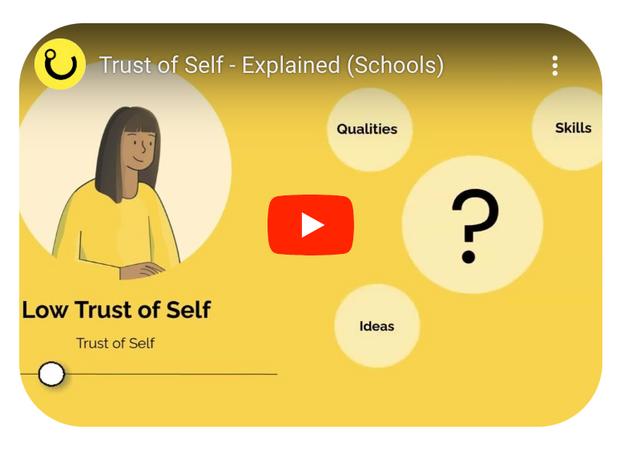


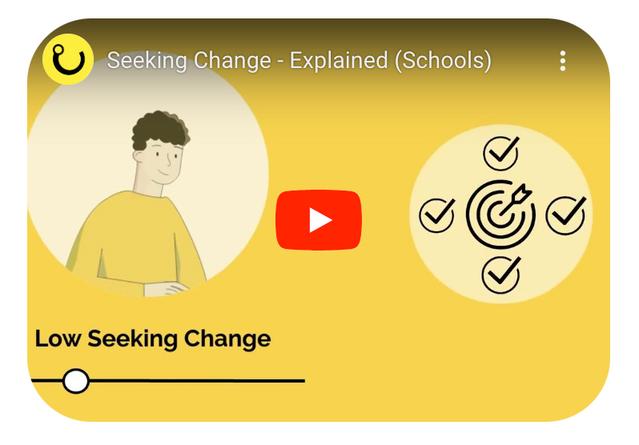
Seeking Change measures how much we seek or limit change We can expand, explore and change our relationships, opportunities, ideas and goals We can also keep our relationships, opportunities, ideas and goals the same but make them more secure and predictable.


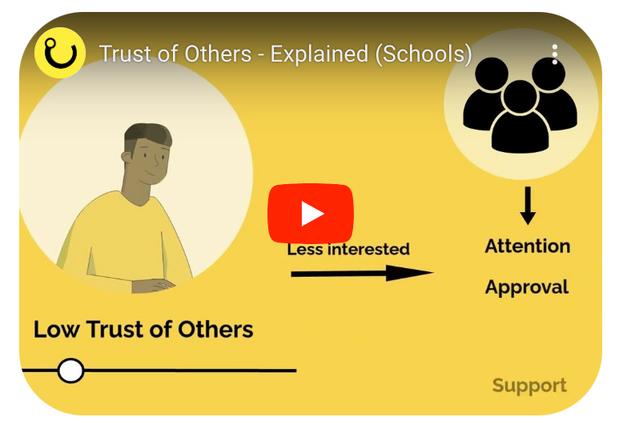
Trust of Others measures how much we trust or question other people’s qualities, skills, ideas and opinions

Our Trust of Others depends on how available, reliable, or supportive we think others will be The more we trust others, the more we seek their attention, approval and support, the more responsive we are to their requests The more we question others, the less we seek their attention, approval and support, and the less responsive we are to their requests.t



Self Disclosure measures how visible we make our thoughts, ideas, opinions and feelings to others Like a theatre, we can share our thoughts, ideas, opinions and feelings with an audience on our frontstage, or we can keep them private on our backstage


When a student has one or more polar biases



Students flagged with Social Naivety have a high Trust of Self and a high Trust of Others, which can lead to naive and unrealistic expectations about themselves and others. Their high Seeking Change means they can be overly optimistic and impulsive, overlooking the risks others see They may feel invincible - what could go wrong? Because they feel so invincible they may have limited empathy and compassion for those who feel more vulnerable, and be a little insensitive and thoughtless in their interactions

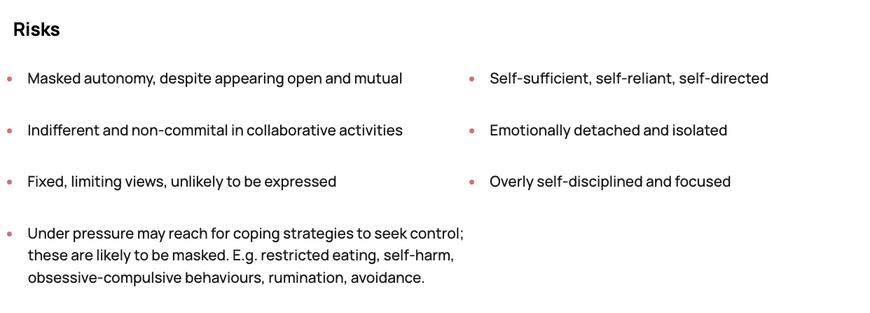

Students flagged with Hidden Autonomy are self-trusting and socially-questioning They are self-reliant and may be dismissive of others' ideas and support. Their low Seeking Change means they like a lot of control and may be inflexible at times Because these students are likely to mask this with a more open, collaborative front-stage persona and hide their struggles, they are particularly vulnerable under pressure They are unlikely to request or receive support, leaving them isolated and ruminating on their own fixed ideas.t

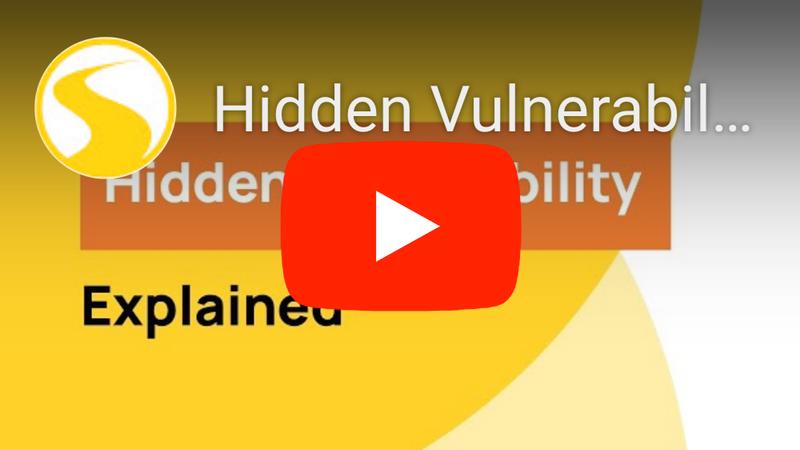

Students flagged with Hidden Vulnerability are both self-questioning and socially-questioning. Because this can make them feel vulnerable, they will find ways to make them feel safe, and avoid situations they see as threatening These students are particularly at risk because they are likely to mask their vulnerability. They may not show or tell anyone how they feel, and will be unlikely to get the support they need.
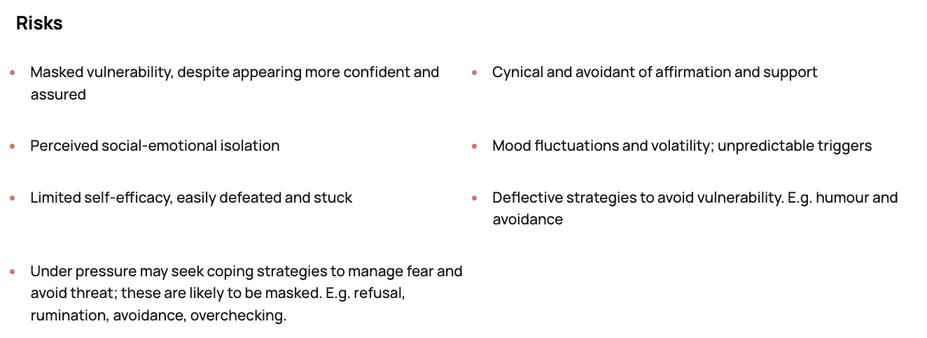
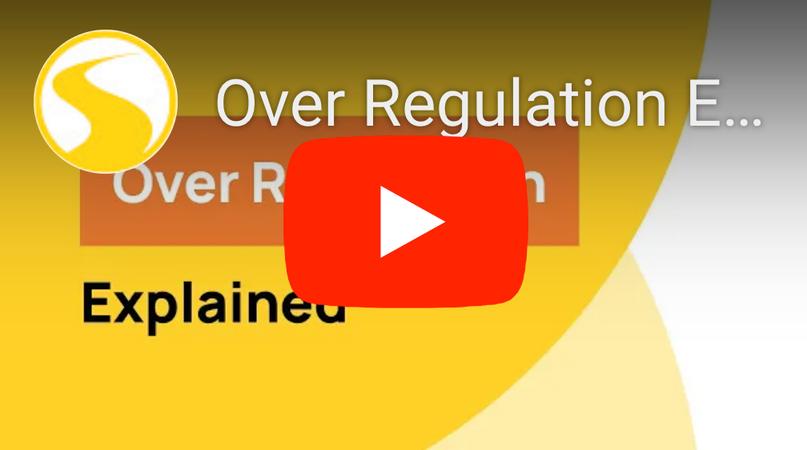
Over regulating students are selfmonitoring and socially-monitoring. They are continually anticipating what might happen, and how they would respond This conscious hypervigilance is very effortful and exhausting to sustain It is no surprise that students who over regulate are more likely to dysregulate. This means that they may suddenly develop polar biases, indicating increased social and emotional risks
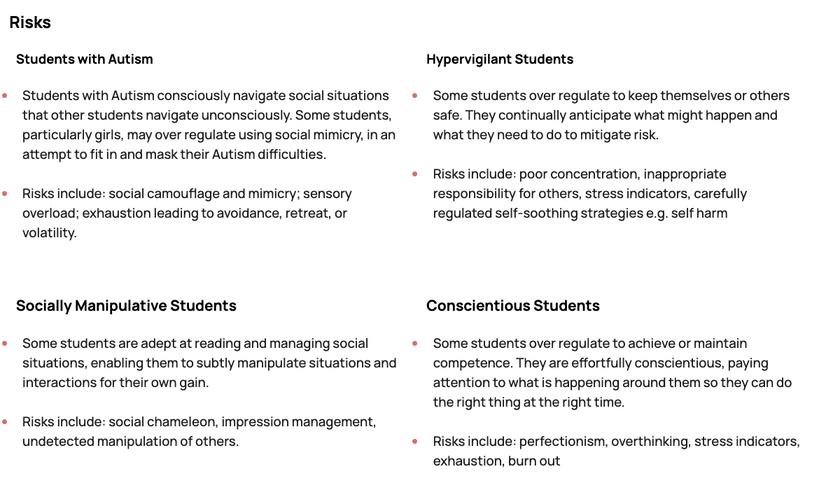
Over Regulation is a sustained pattern of effortful self-regulation



Seeking Change Instability is flagged when students have a high variance between their in and out of school Seeking Change scores.Students flagged with Seeking Change Instability seek change in one context, but seek stability in another This compensatory strategy is unusual and extreme It may be a way of offsetting and managing strain and pressure.These students are particularly at risk because they may be more erratic and unpredictable in their behaviours Students with Seeking Change Instability often have low Trust of Others and low Self Disclosure, suggesting that they are unlikely to exhibit strain and pressure or reach out to others who could offer support.

If you would like more help and advice contact Michelle Lucas-Halliwell
